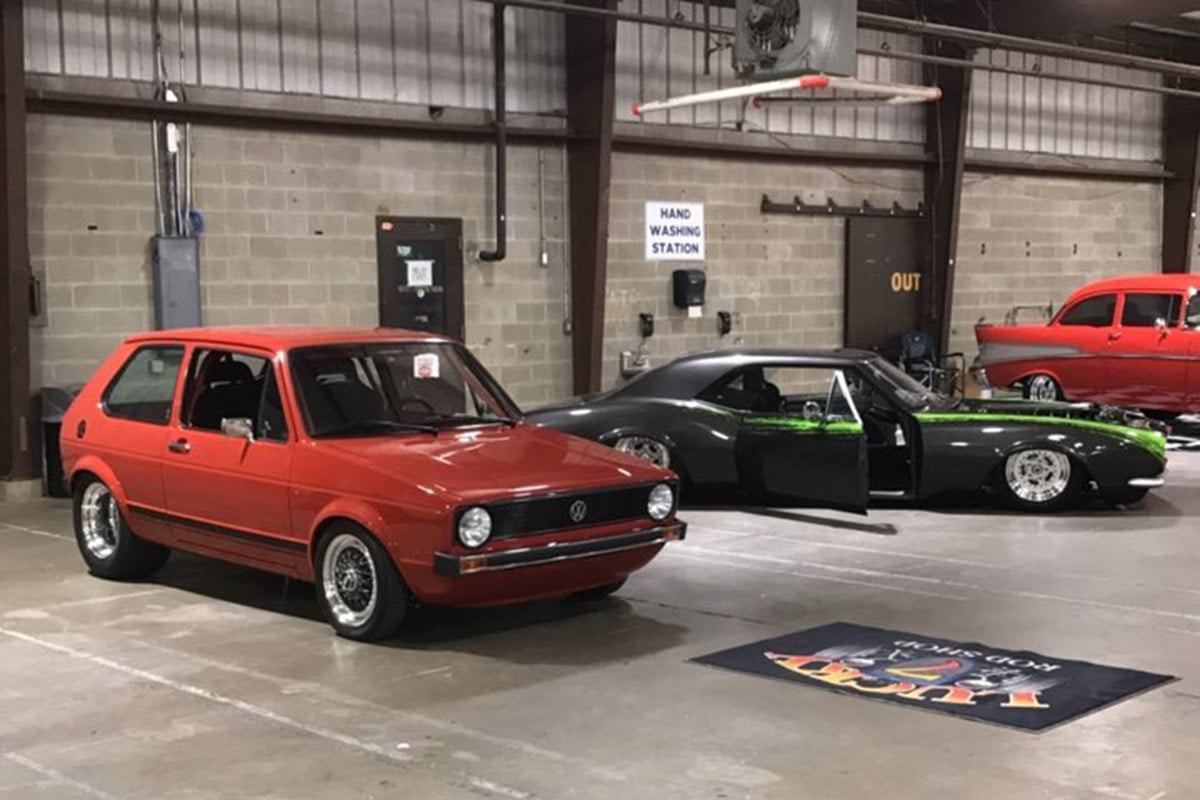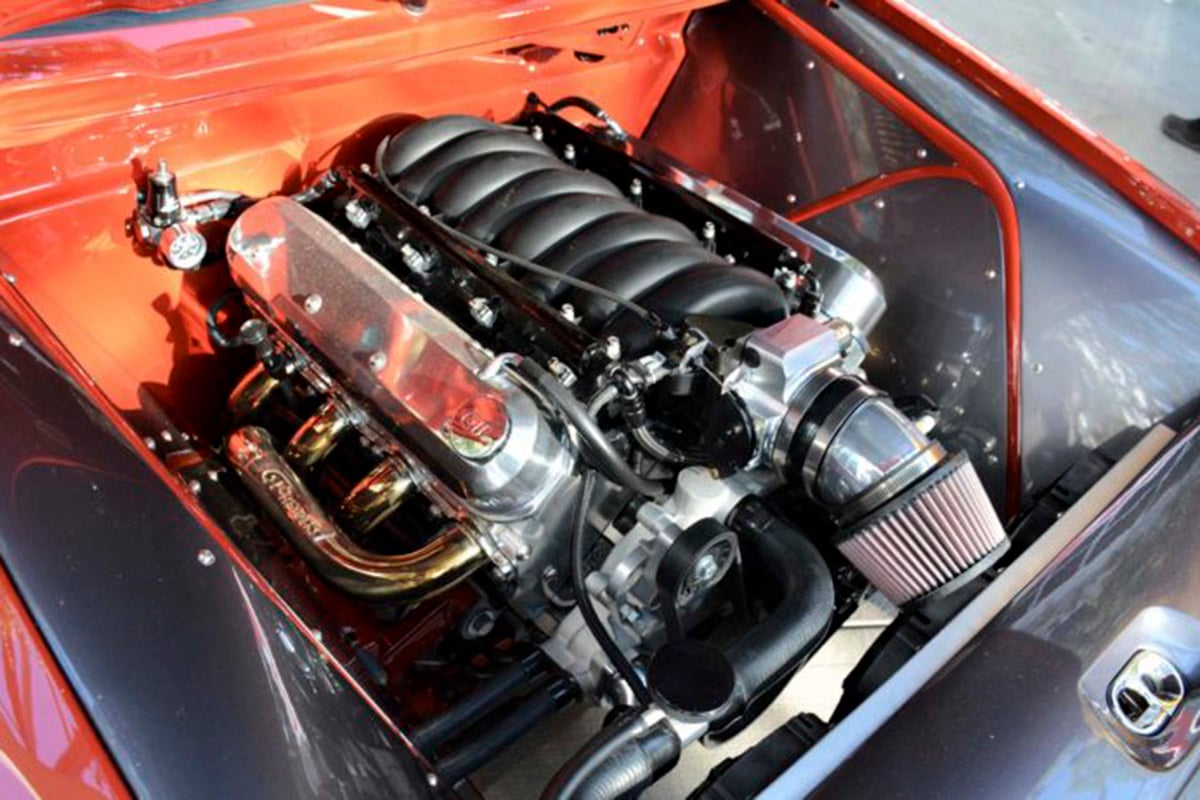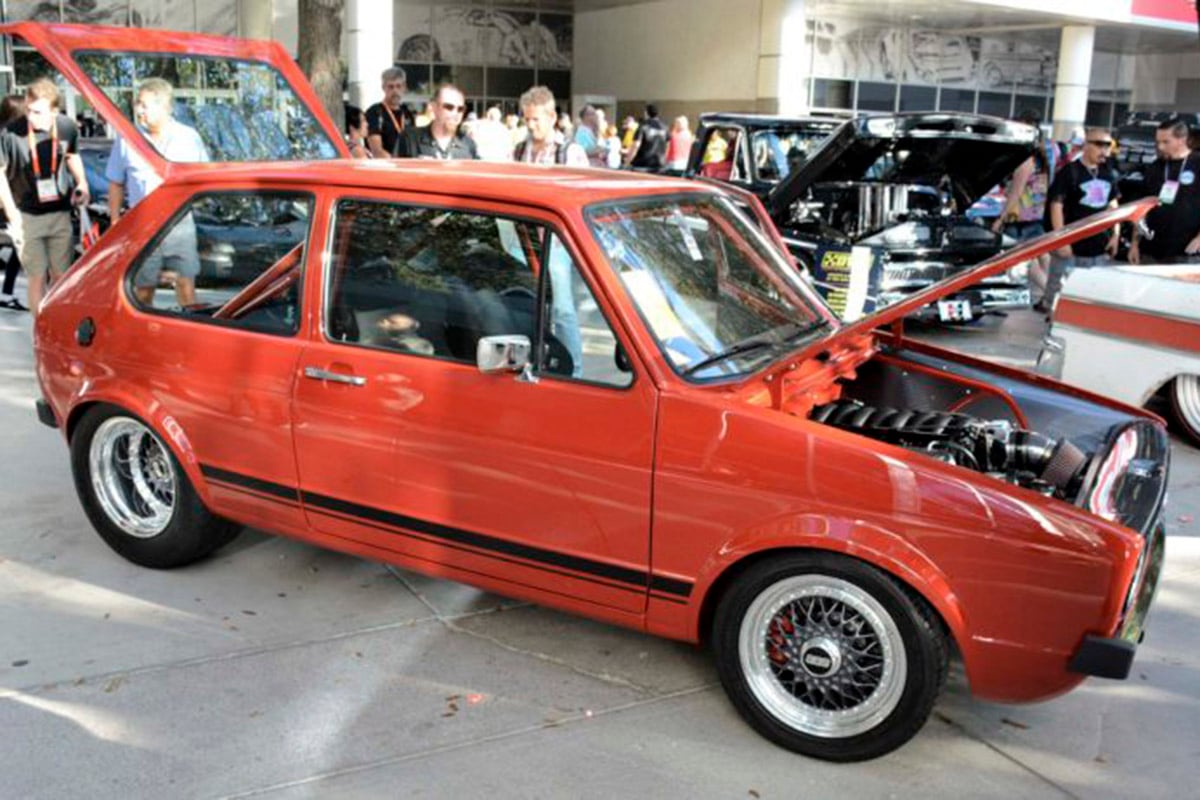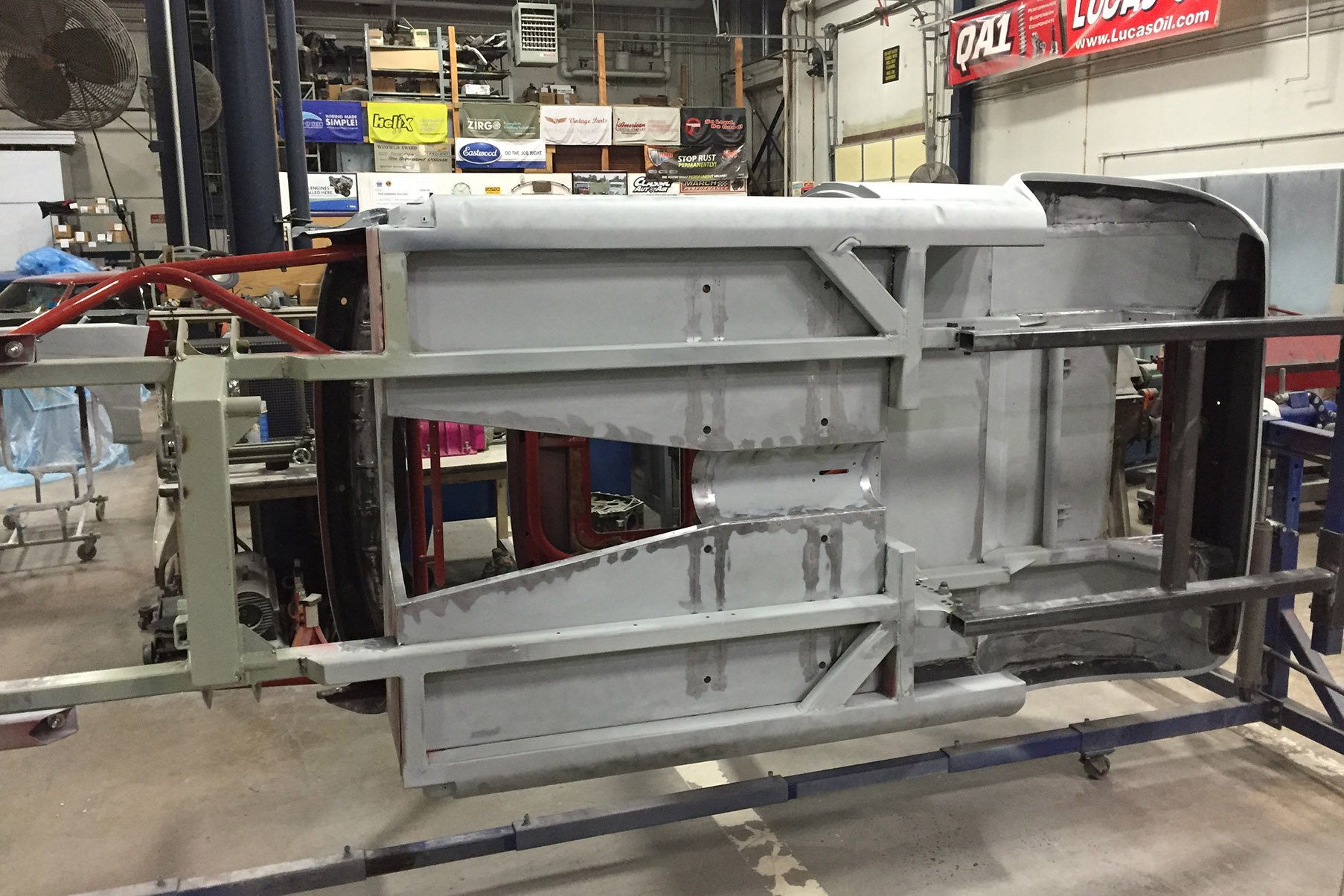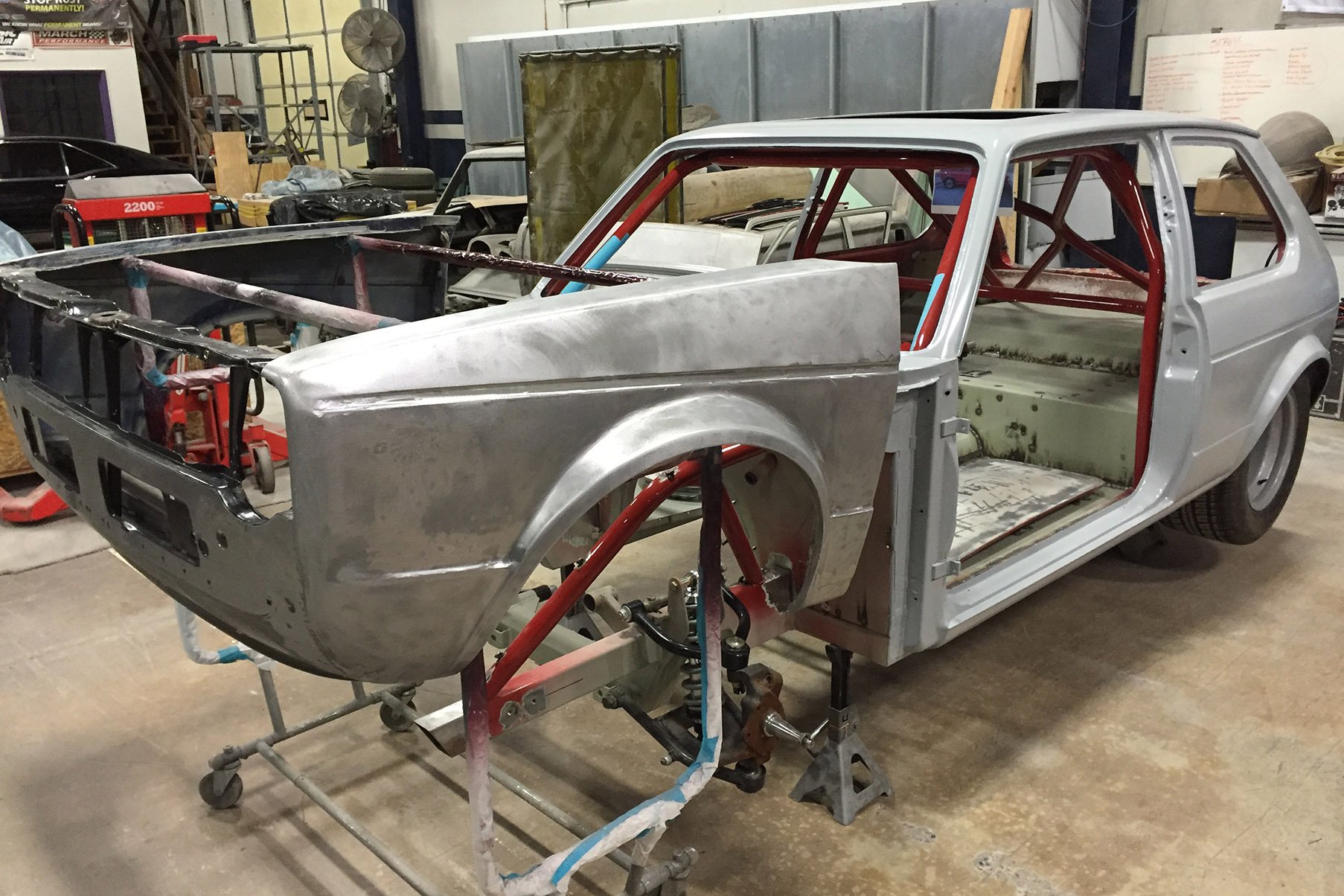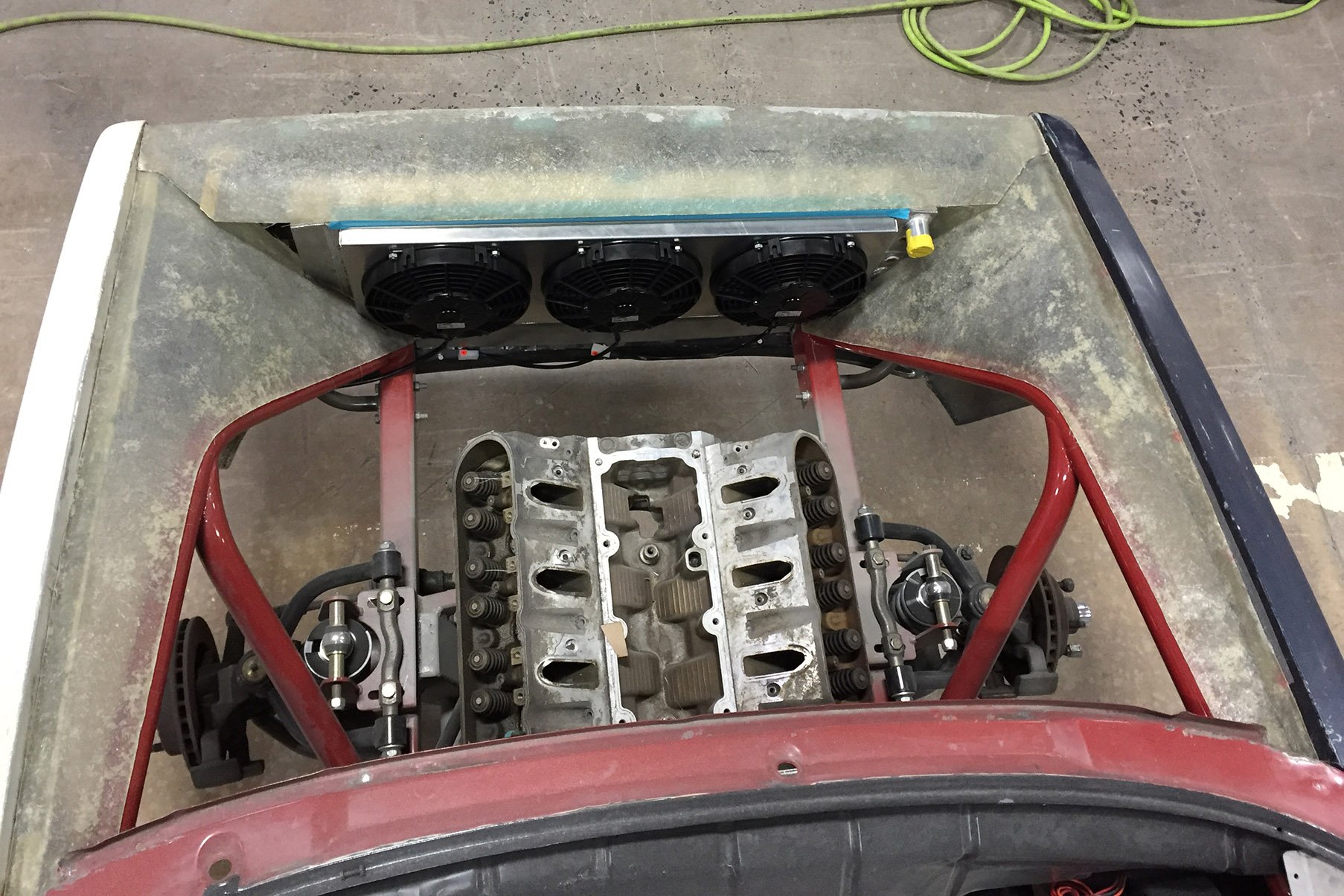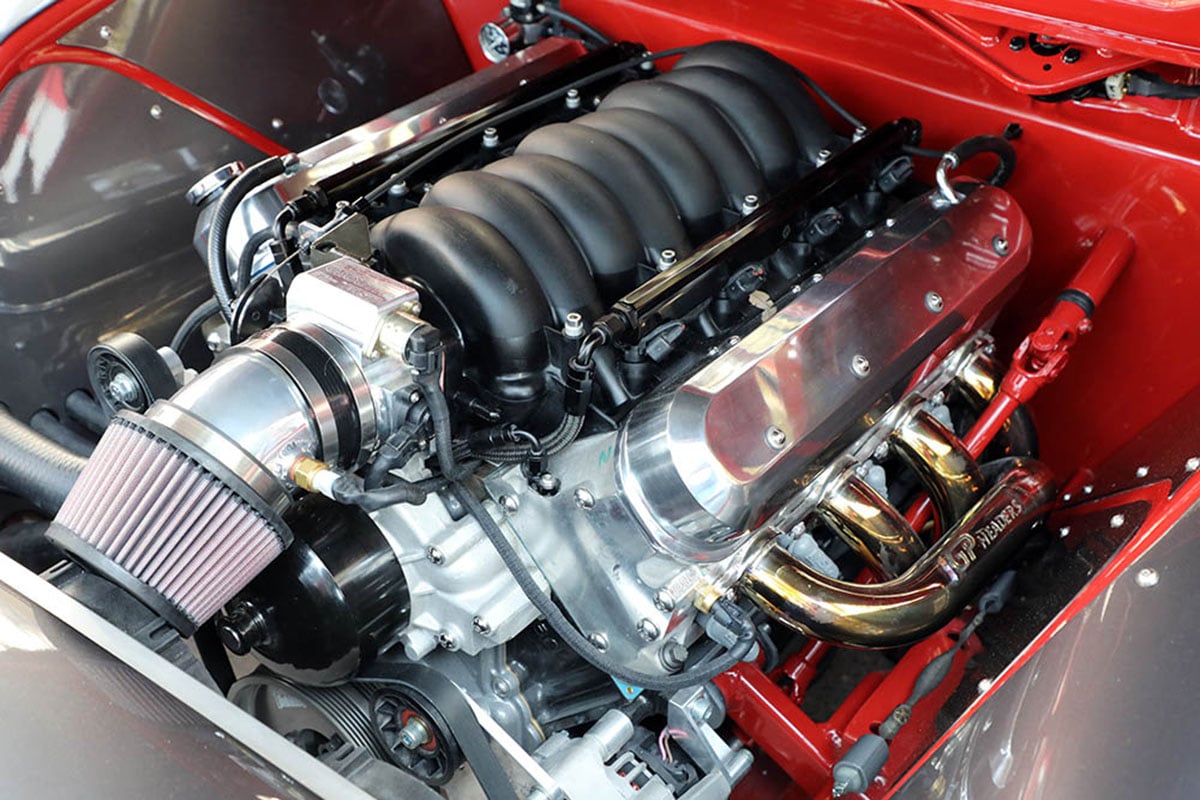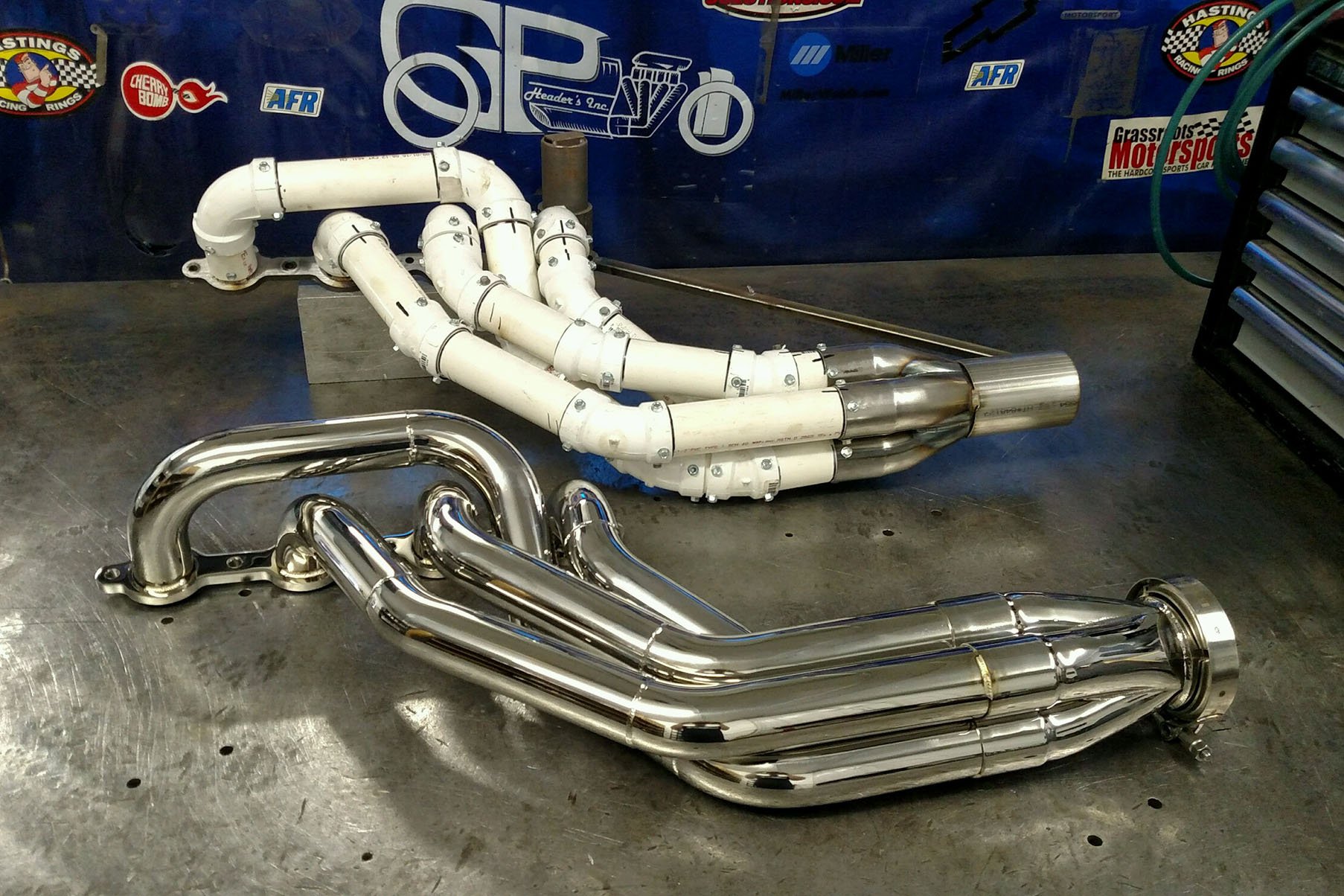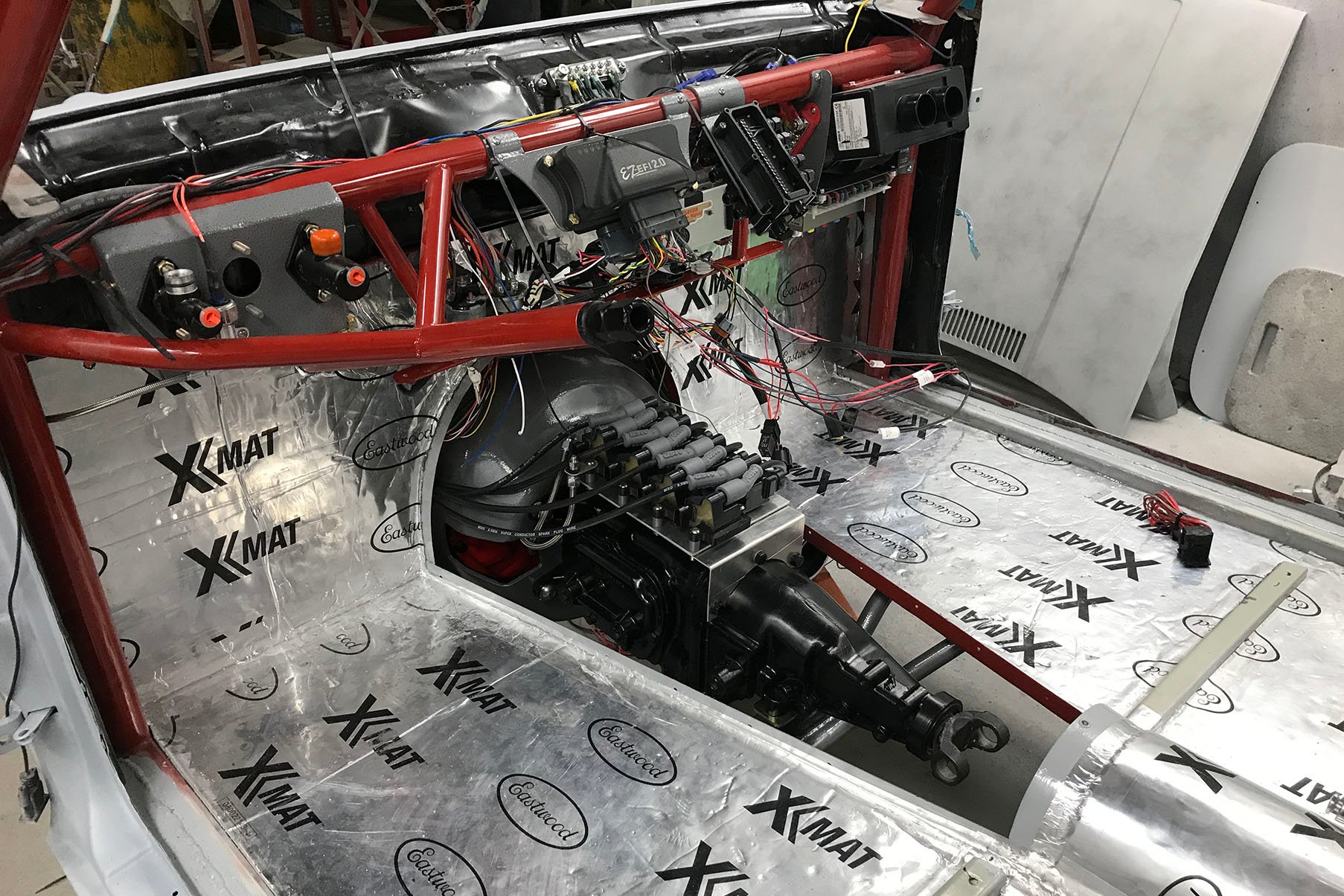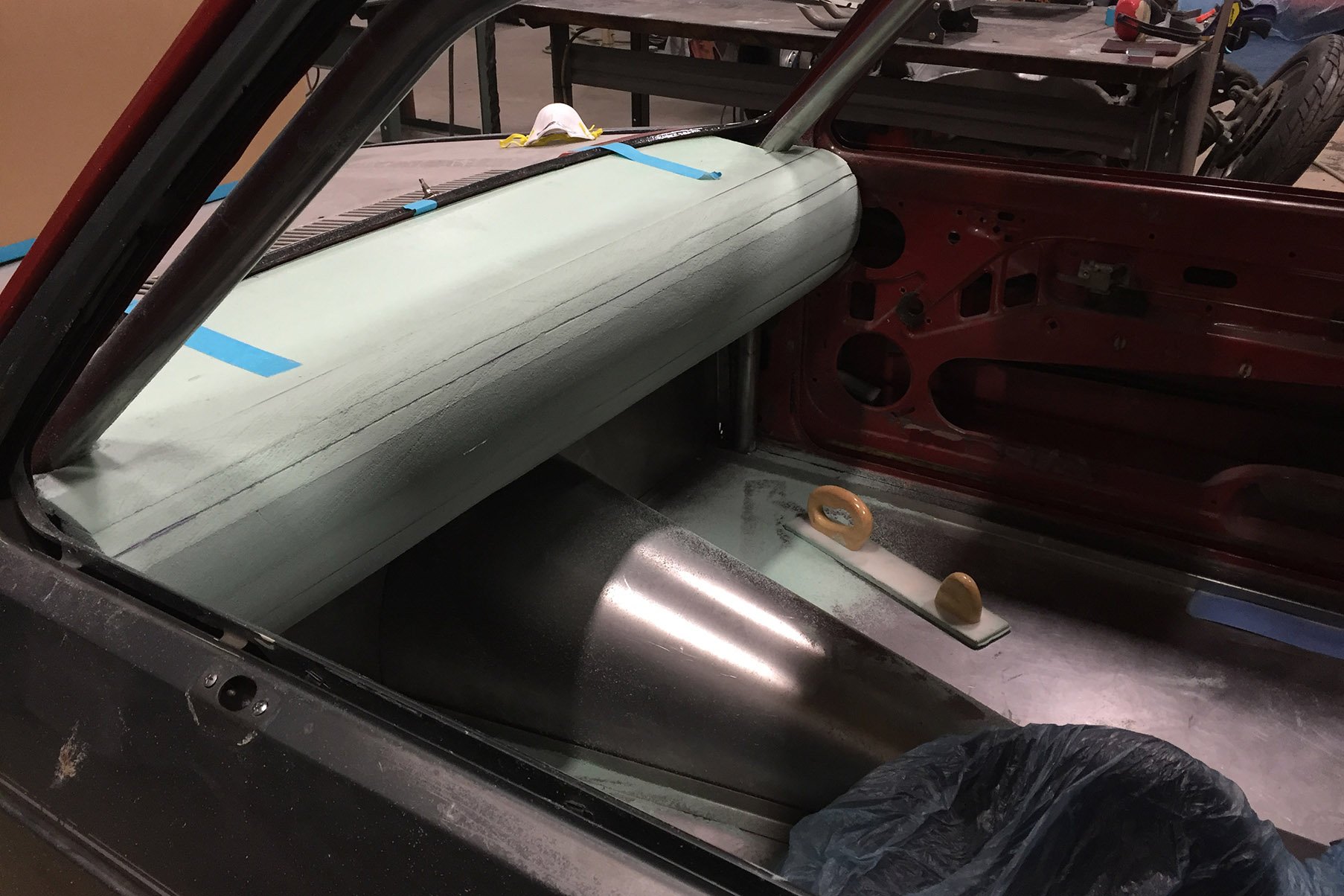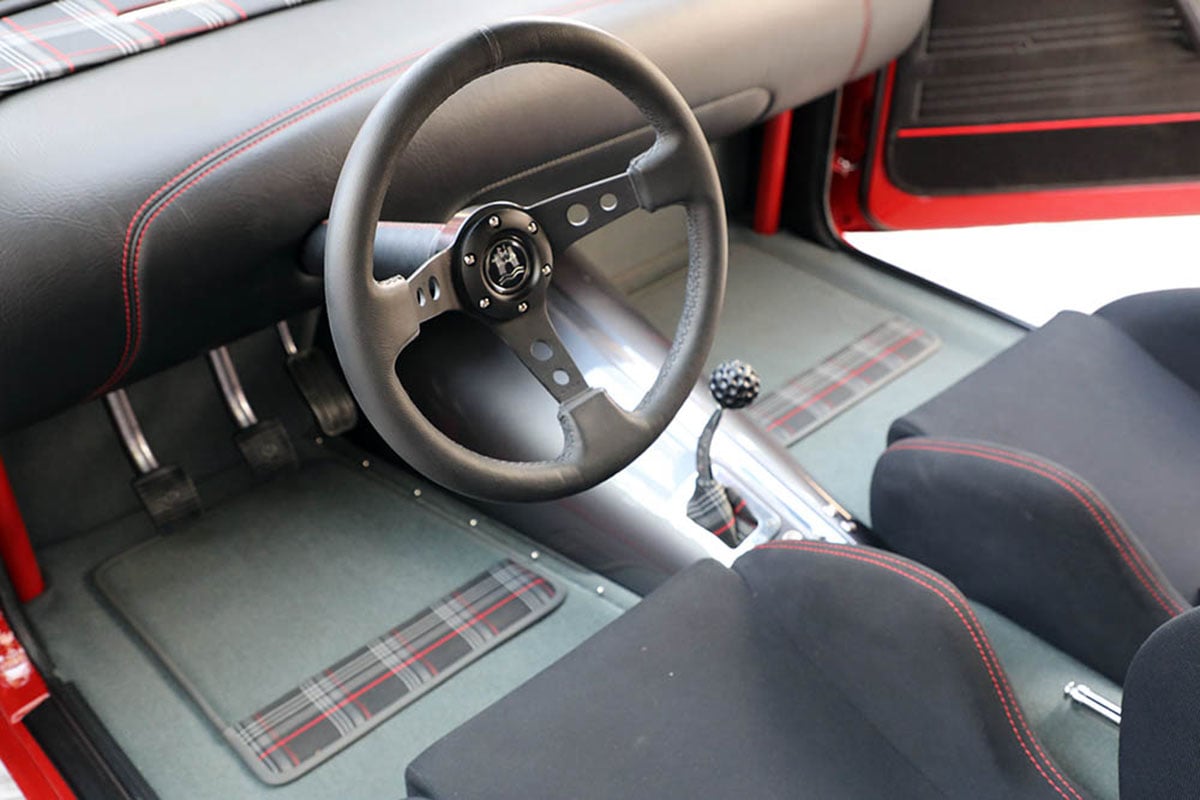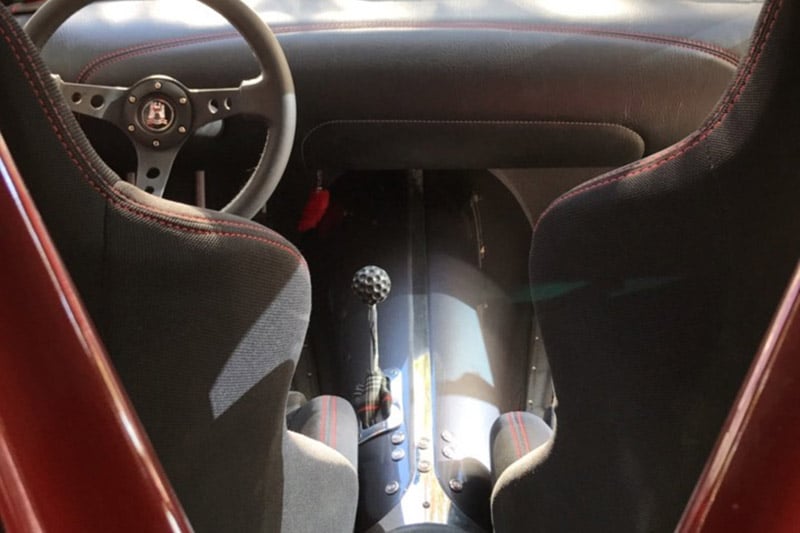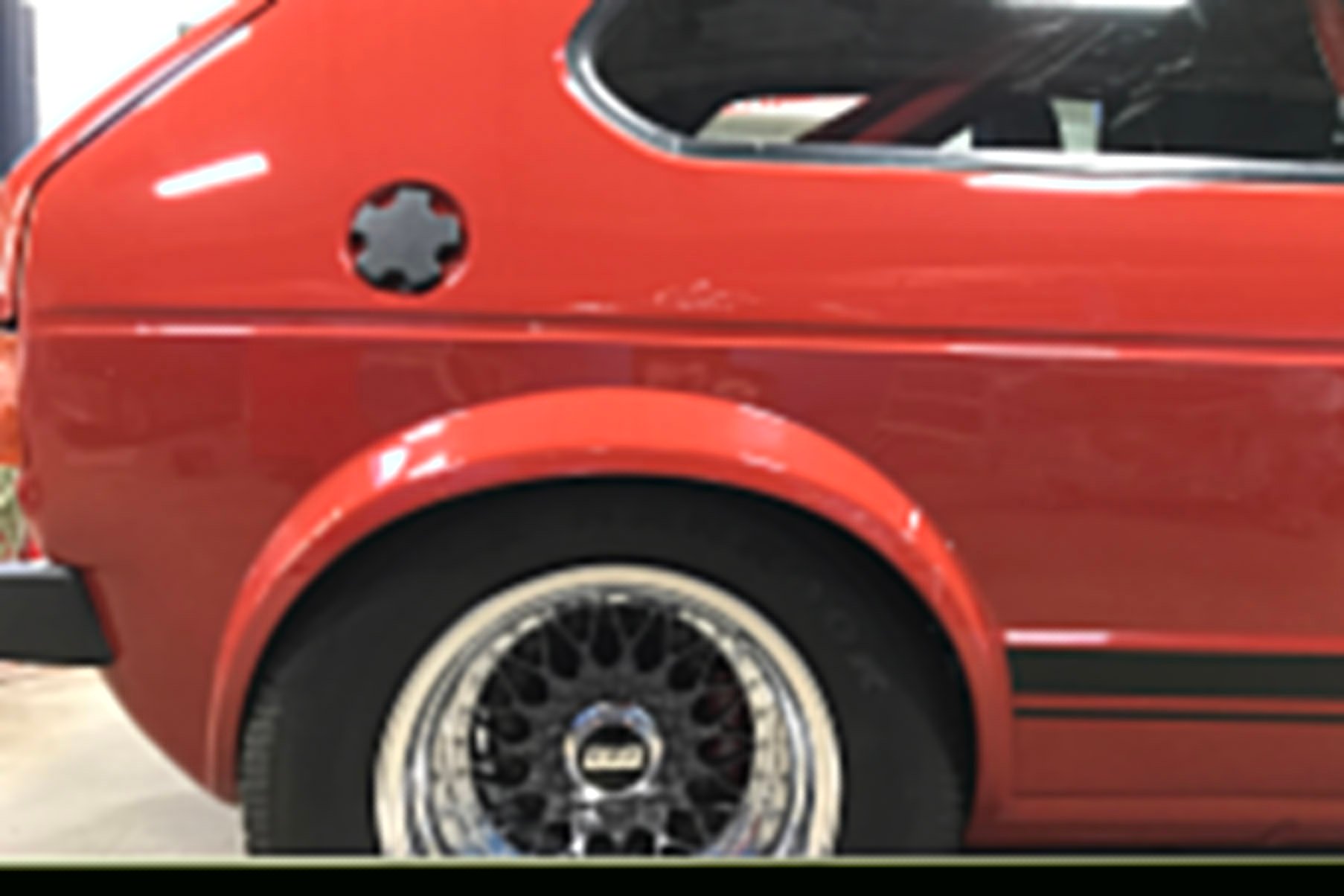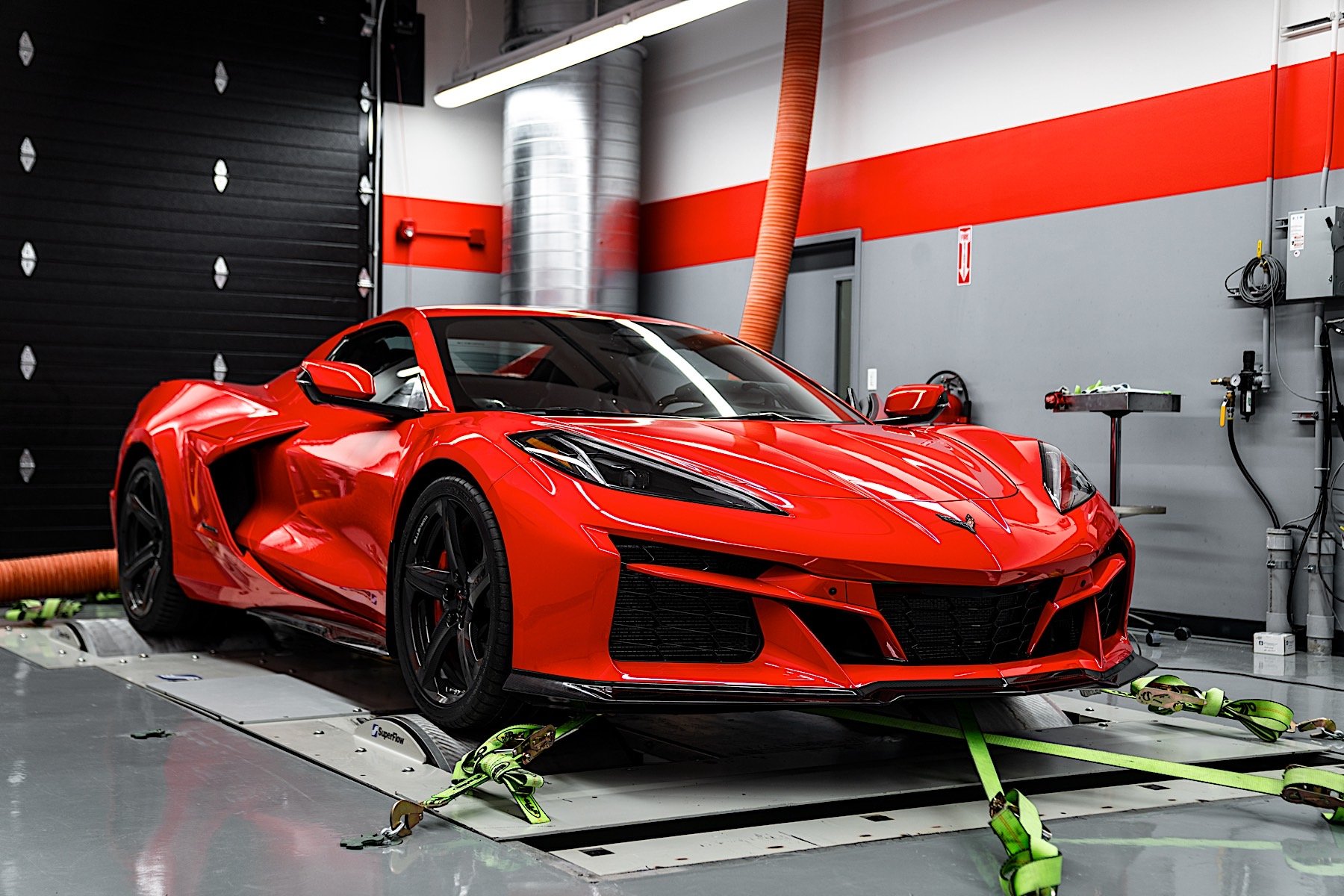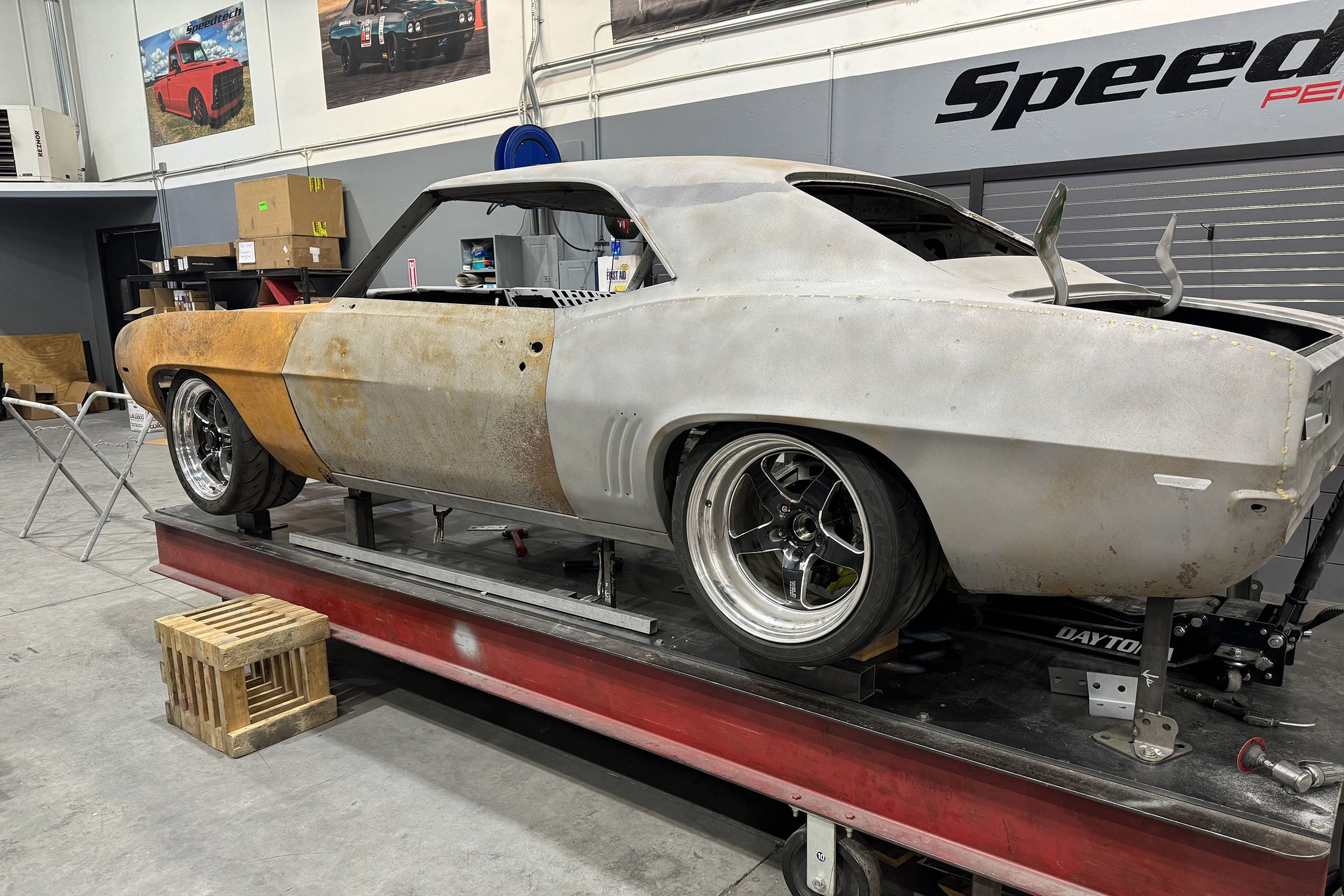“Before I even got my license I started playing around with cars,” explained Connor Hofford of Lancaster, Pennsylvania, who works as a fabricator and general technician for Quality Custom Rides. “I put together a car when I was 15 – a ’77 Buick Regal with a small-block Chevy. Later, I did some work on an ’81 VW Jetta I had and took it to the Motorama show in Harrisburg. I was set up next to a ’48 Studebaker pickup truck, which turned out to be a vehicle that QCR had just completed. That’s how I ended up meeting my boss.”
It’s around that time that Hofford also started toying with the idea of a Volkswagen Rabbit project. “I was just working through some ideas with the chassis,” he said. “I ran into Mike Heim [of QCR] at another car show later on. By then I’d progressed a bit with the Rabbit project – the chassis and all that stuff was done. I showed him the work I’d done so far and he offered me a job.”
That was three years ago. After coming on board with Quality Custom Rides and working on shop builds for a year or so, Heim suggested that Hofford bring his Rabbit project in. “That’s when I really started getting crazy with it,” he noted with a chuckle.
From a 50-foot glance, it's really only the wheels and tires that suggest there might be more to this '84 VW Rabbit than initially meets the eye. Upon closer inspection, it's hard to not be in awe of how extensive the project was. Underneath the factory bodywork, this is essentially a tube chassis race car with an LS powerplant. The car pratically defines the term sleeper.
Hofford tells us that the original inspiration behind the Rabbit build really had more to do with necessity than the inherent oddball factor. “When I started out with the whole idea, I wanted to find a small car, like maybe a Pinto, Gremlin, or Vega,” he recalled.
“But all that stuff just seemed like it was too much money for the condition that the cars were in. I had this Volkswagen Rabbit sitting in a chicken coop that I was using as a shop. I’d driven the car to school senior year, but I took it off the road that summer because it’d just gotten too rusty and it had some electrical issues. Once I pulled it apart and saw how bad it was I realized it wasn’t worth putting it back to original, so it became the candidate for the build.”
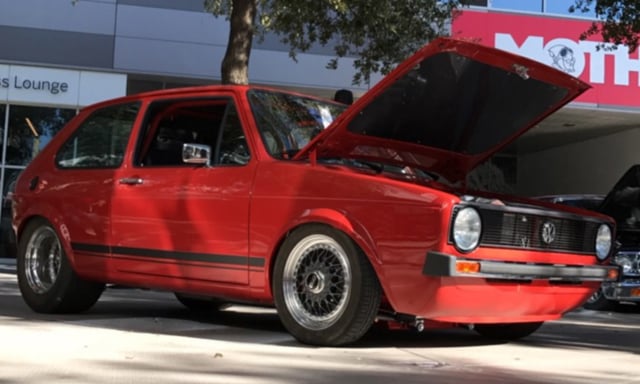
The only inkling that this isn’t just a well-preserved Rabbit are the large drag radials it is tucking out back. And even then, they’re pretty easy to miss.
The completed project made its debut at the 2017 SEMA show, where it garnered enough attention to put Hofford in the top ten in the Young Guns class of the Battle of the Builders competition, along with no shortage of head-turning interest from event attendees. To say this LS-powered Rabbit build is both wild and shockingly sanitary is an understatement. Here’s how it all came together.
The Build
“Basically everything on the car is custom aside from the roof, sunroof panel, and the doors – everything else has had something done to it,” Hofford explained. “The majority of the frame is 2 x 3 box tubing. I built the chassis in my garage at home – the whole bottom of the car I just basically chopped apart with a Sawzall and pretty much started over with a bunch of box tubing.”
After using the Rabbit as a daily driver in high school, Hofford parked it due to electrical issues and the spread of rust. Once he had determined it was too far gone to be worth fixing as it sat, he decided that rather than shelling out for an old compact domestic like a Vega or Pinto for his next project, he would build an entirely new chassis for the Rabbit that could accommodate the LS powertrain and the other performance hardware he wanted to use.
What he ended up with was essentially a Pro Street-style chassis that kept the overall shape and external dimensions of a stock Rabbit. “I wanted to conceal what was going on underneath and make it look fairly normal on the outside.”
Basically everything on the car is custom aside from the roof, sunroof panel, and the doors – everything else has had something done to it. The majority of the frame is 2 x 3 box tubing. I built the whole chassis in my garage at home – the whole bottom of the car I just basically chopped apart with a Sawzall and pretty much started over with a bunch of box tubing.
As to why he chose an M20 versus a more modern Tremec six-speed that you’d typically find paired with an LS mill, Hofford explained that, like the Rabbit itself, part of the strategy just came down to accessibly. “I like driving old four speed cars – I think it’s fun to crash through the gears with a Hurst,” he told us. “But the other part of it was that I was 19 or 20 when I bought the trans, and that’s about all I could afford in a manual gearbox!”
Though he didn’t design the build around a particular set of competition rules, racing or otherwise, Hofford said the setup is mainly aimed at the drag strip and cruise nights. “Basically I wanted to be able to take it out on the street and romp on it when I wanted to, and if I wanted to take it down to the track on a Friday night or something, and I’d be able to do that kind of thing, too.”

Hofford told us that when he first bought the car, even getting it home was a story in and of itself. “My dad was already pissed off that I’d sold my Volkswagen Fox to buy this thing,” he remembered. “The night I went to bring it home, it was raining – real nasty out. I got about two miles down the road from the seller’s house and the hood blew open. It bent the hood up, knocked the rearview mirror off, and I couldn’t see where I was going! After that, we got the hood strapped down with a bungee cord, and of course, it started overheating, and the mechanical fuel injection was wonky and jumping all over the place. It was a mess!”
To that end, the front suspension is all custom Mustang II-style hardware with QA1 coilovers while the rear is a parallel four-link setup. A set of custom 15-inch BBS wheels conceal a Wilwood brake system and are wrapped in Hankook performance rubber measuring 295mm in the rear. “The wheels needed some customization to fit too,” he added. “To clear the Wilwood wheel hubs we had to machine the center of the wheel face out to make it work.”
The centerpiece of the build is the 6.0-liter V8 under the hood, an LQ4 pulled from a GMC work van. The engine was warmed over with an LS3 top end, along with a beefed up rotating assembly and a healthy camshaft. A custom fabricated set of headers help to get it all to fit in the tight confines of the Rabbit's engine bay. The ignition coils have been mounted on the gearbox housing to hide them from view and keep the plug wires away from the exhaust system.
The interior saw its own fair share of customization, too. “The dash is a custom fiberglass piece that I made,” he said. “I wanted it to have a smooth, minimal look – I didn’t want to have a bunch of gaudy looking crap and gauges all over the place.” Instead, a Racepak IQ3 digital display allows Hofford to monitor the Rabbit’s vitals, which is mounted to the top of the rollcage where it’s hidden away from view unless you’re behind the wheel. He also tossed the stock seats in favor of race buckets with contrast stitching which blend well with the car’s factory red paint hue.
Since the chassis was fabricated, it only made sense to put the interior together from scratch as well. The look has a retro-futuristic vibe to it due to a total lack of gauges, knobs, switches, and even turn signals cluttering the aesthetic. Most of the informational stuff is handled by a Racepak IQ3 digital display, which is mounted at the top of the roll bar in front of the driver, while accessory functions are accessible by way of buttons installed on the transmission tunnel.
The transmission tunnel is another area of the project that saw quite a bit of attention. “It’s bead-rolled and also slip-rolled to get the contour we wanted. The pieces in the center that are a bit raised up are painted the accent color of the BBS wheels we used, while the outside sections are polished.” Along with housing the gear-shift, the tunnel also has a collection of buttons installed in it that operate the windows, turn signals, and other functions.
The Result
The benefits of Hofford’s meticulous attention to detail with the project are obvious. And as you can imagine, making it all work the way he wanted it to didn’t come without its fair share of challenges. “I’d say the biggest thing was that I really wanted to be able to keep everything under the hood of the car,” he recalled.
Among the vast array of custom elements in this build are some clever low-key touches like the factory gas cap, which currently functions as a kill switch rather than a filler neck. The real gas cap is now behind the license plate.
“I didn’t want to have a scoop or anything like that. At that point in the build, I was making all the motor mounts in my garage, and I didn’t have a lot of people working on the project with me then. And of course, nobody had ever really done this before – this was the first full chassis I’ve built, so there was some trial and error involved. The biggest challenge was just getting the engine, oil pan, crossmember, and everything to line up while keeping it low enough to fit under the stock hood.”
Like many builds that make their way to SEMA, the project got the finishing touches just a few days before it arrived in Vegas, where it placed in the top 40 overall in the Battle of the Builders competition, and in the top ten in the Young Guns class.
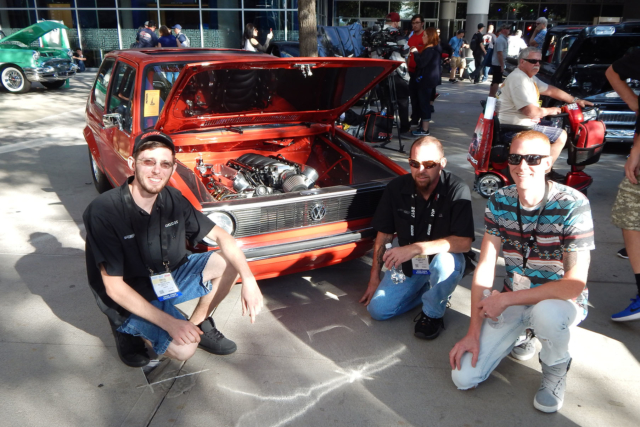
Hofford, seen here on the left, made it into the top 10 in the Battle of the Builders’ Young Guns class for entrants who are 27 years old or younger. Considering he’s only 23, it’s probably only a matter time before he nabs that top spot.
For the time being though, he says that the Rabbit won’t see any dramatic changes versus what was shown last fall. “There’s a couple of things I didn’t have a chance to finish up before SEMA that I still want to do. But I’m pretty much just going to tidy up that stuff and just kind of enjoy for a while – take it around to as many of the shows as I can and relax with it for a bit.”
If that’s what equates to downtime for Hofford, we’d say it’s well earned.

